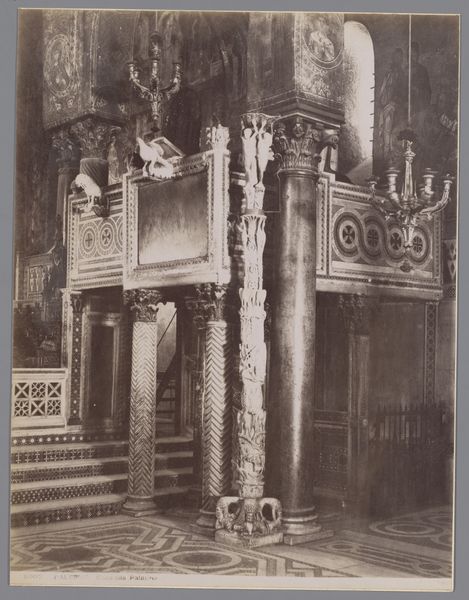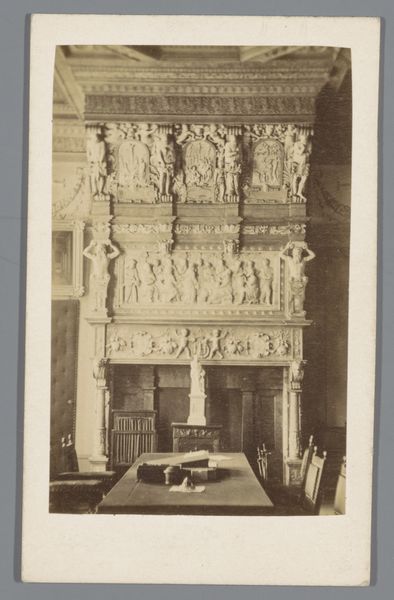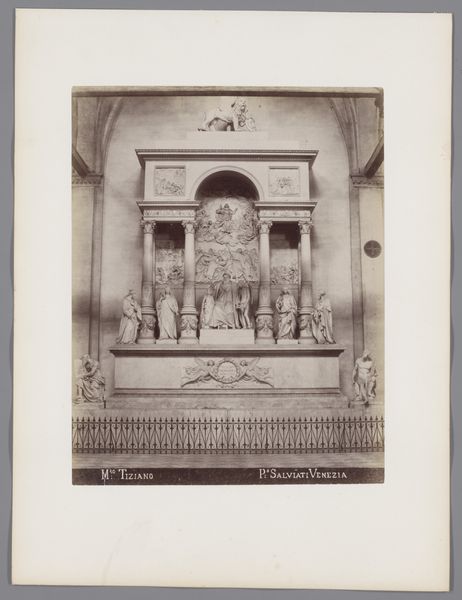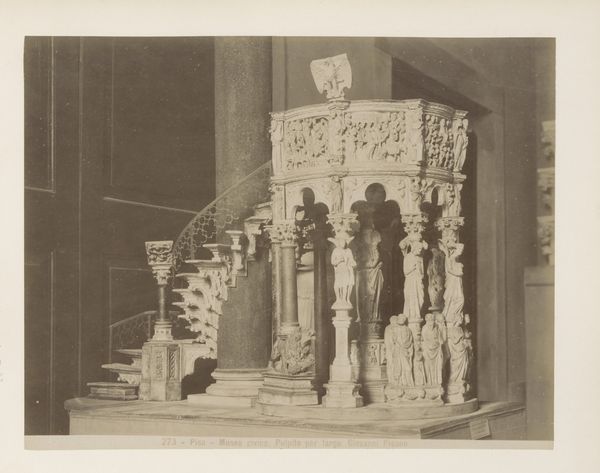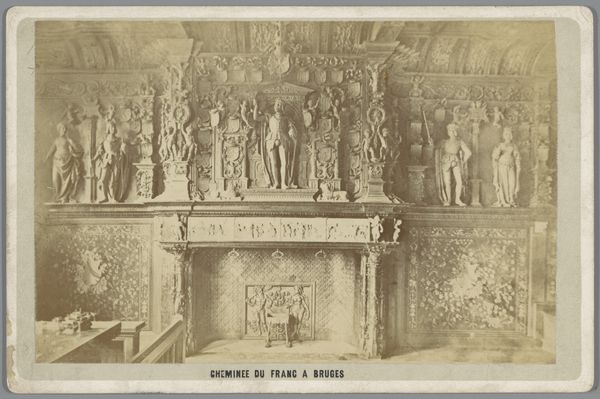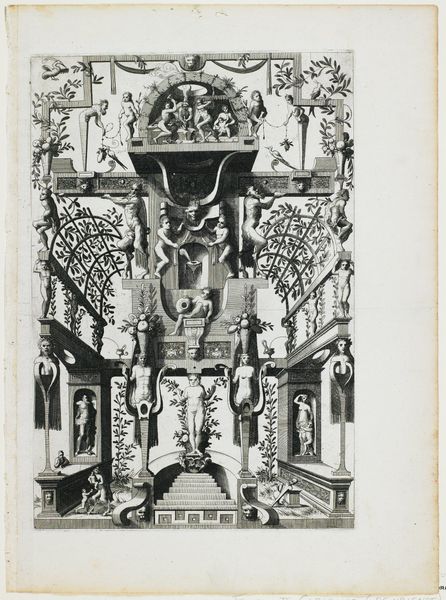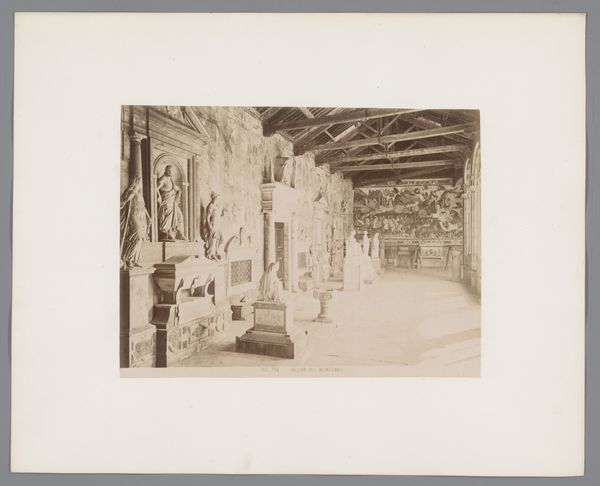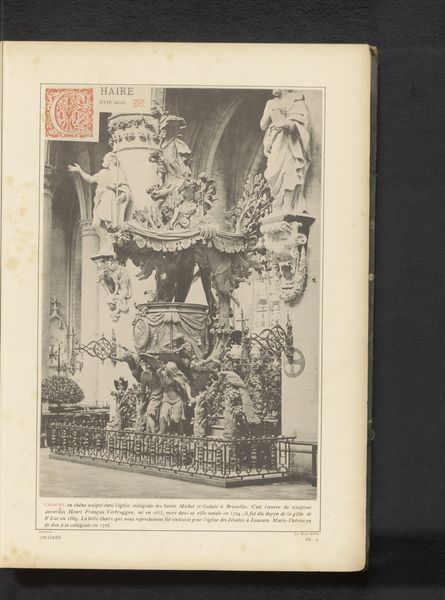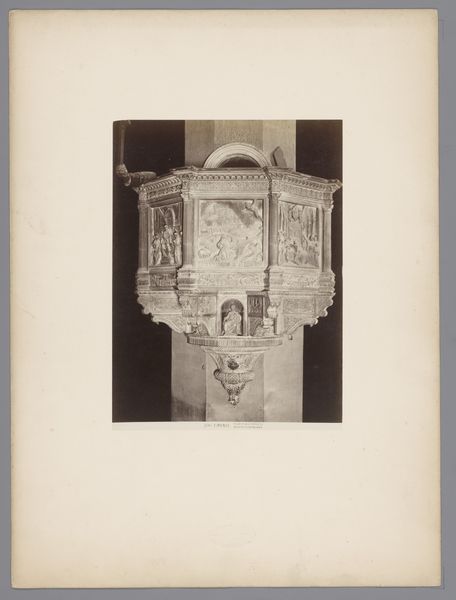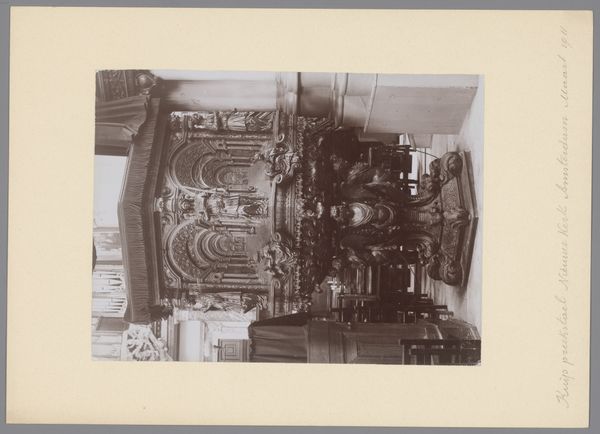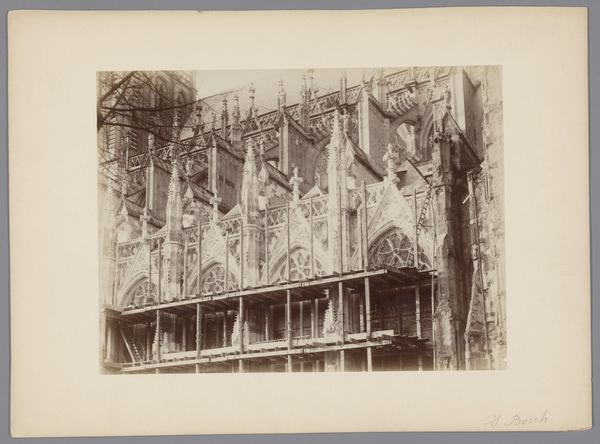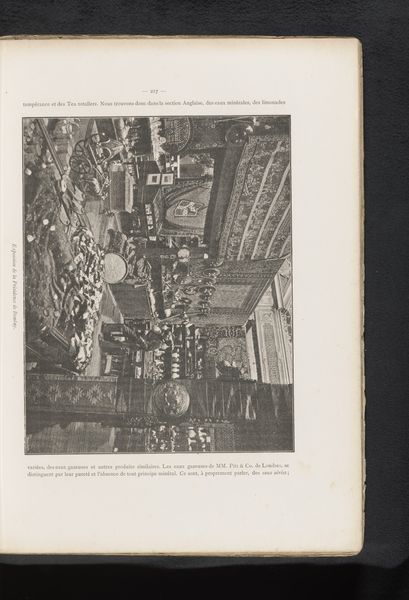
Carved pillars of the Mandapam at the Meenakshi Temple in Madurai, Tamil Nadu, India c. 1880 - 1890
0:00
0:00
photography, site-specific
#
portrait
#
asian-art
#
landscape
#
photography
#
ancient-mediterranean
#
site-specific
Dimensions: height 260 mm, width 204 mm, height 276 mm, width 223 mm
Copyright: Rijks Museum: Open Domain
Curator: What strikes me most is the weightiness of this image, both literally in the stone and figuratively in its implied history. Editor: I agree. It feels monumental. This photograph by Nicholas & Co., taken sometime between 1880 and 1890, depicts the carved pillars of the Mandapam at the Meenakshi Temple in Madurai, Tamil Nadu, India. It is currently held in the collection of the Rijksmuseum. Curator: The scale is incredible. The photograph’s composition focuses on these ornate pillars, figures seemingly frozen in dynamic poses. I wonder about the narratives they depict. Are they mythical? Royal? How do they reinforce social hierarchies, or challenge them, within their context? Editor: We can discern cultural continuity and the transmission of beliefs across generations through recurring iconographic motifs such as elephants, divine beings, and geometric designs that probably carry symbolic weight rooted in Hinduism and regional folklore. Consider how the image evokes power—spiritual, political, artistic. These are visual languages reflecting world views and philosophies of those times. Curator: It is important to acknowledge that photographs such as these also participated in a colonial gaze. The photographers, probably Westerners, framed the scene in a manner that would have appealed to Western audiences, reinforcing certain Orientalist ideas about India and its art. Editor: Precisely. There’s a layered effect here. We observe ancient iconography filtered through the photographer's lens, influencing viewers across different eras and geographical locations. This speaks to the fluid interpretation of cultural artifacts through time and how perception constantly evolves. Curator: Right. Considering that this photograph comes from the colonial period forces us to analyze its possible use to represent India through a very particular lens. Whose history is highlighted, and whose history is relegated to the background? What choices did the photographers make to align with colonial political agendas? Editor: In reflecting on this image, one must accept the co-existence of varied meanings embodied within and projected onto this powerful photography of art and architecture. Curator: Agreed, its meaning lies not only in the skill it demonstrates, but also the intricate network of power dynamics, cultural interactions, and perspectives it carries within itself.
Comments
No comments
Be the first to comment and join the conversation on the ultimate creative platform.
